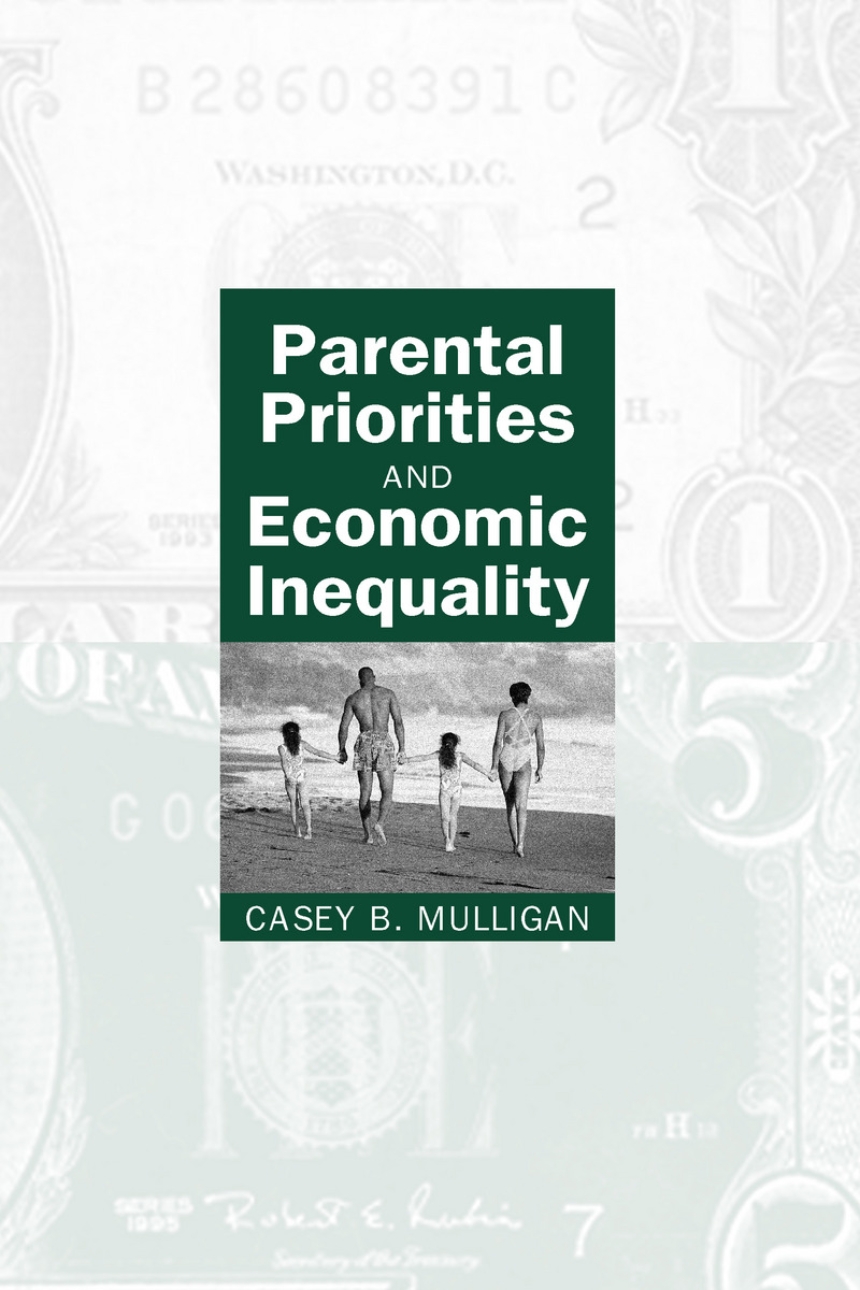Parental Priorities and Economic Inequality
What determines whether children grow up to be rich or poor? Arguing that parental actions are some of the most important sources of wealth inequality, Casey B. Mulligan investigates the transmission of economic status from one generation to the next by constructing an economic model of parental preferences.
In Mulligan’s model, parents determine the degree of their altruistic concern for their children and spend time with and resources on them accordingly—just as they might make choices about how they spend money. Mulligan tests his model against both old and new evidence on the intergenerational transmission of consumption, earnings, and wealth, including models that emphasize "financial constraints." One major prediction of Mulligan’s model confirmed by the evidence is that children of wealthy parents typically spend more than they earn.
Mulligan’s innovative approach can also help explain other important behavior, such as charitable giving and "corporate loyalty," and will appeal to a wide range of quantitatively oriented social scientists and sociobiologists.
In Mulligan’s model, parents determine the degree of their altruistic concern for their children and spend time with and resources on them accordingly—just as they might make choices about how they spend money. Mulligan tests his model against both old and new evidence on the intergenerational transmission of consumption, earnings, and wealth, including models that emphasize "financial constraints." One major prediction of Mulligan’s model confirmed by the evidence is that children of wealthy parents typically spend more than they earn.
Mulligan’s innovative approach can also help explain other important behavior, such as charitable giving and "corporate loyalty," and will appeal to a wide range of quantitatively oriented social scientists and sociobiologists.
394 pages | 70 line drawings, 36 tables | 6 x 9 | © 1997
Economics and Business: Economics--General Theory and Principles
Sociology: Sociology--Marriage and Family
Table of Contents
List of Illustrations
List of Tables
Acknowledgments
1: The Argument for Parental Priorities
2: Indifference Curve Diagrams as Models of Parental Priorities
3: Two Models of Opportunity and Intergenerational Mobility
4: How Altruism Is Influenced by Economic Status
5: Taxation and Intergenerational Mobility in the Three Models
6: The Evolution of Economic Inequality in the United States
7: The Intergenerational Dynamics of Consumption, Earnings, Income, and Wealth
8: Borrowing Constraints and the Persistence of Inequality
9: The Biological Origins of Altruism
10: Classical Discussions of Altruism
11: Intergenerational Altruism and Inequality within the Family
12: Altruism and Giving beyond the Family
13: Altruism and the Principal-Agent Problem
14: Conclusions
A Guide to Mathematical Notation
References
Index
List of Tables
Acknowledgments
1: The Argument for Parental Priorities
2: Indifference Curve Diagrams as Models of Parental Priorities
3: Two Models of Opportunity and Intergenerational Mobility
4: How Altruism Is Influenced by Economic Status
5: Taxation and Intergenerational Mobility in the Three Models
6: The Evolution of Economic Inequality in the United States
7: The Intergenerational Dynamics of Consumption, Earnings, Income, and Wealth
8: Borrowing Constraints and the Persistence of Inequality
9: The Biological Origins of Altruism
10: Classical Discussions of Altruism
11: Intergenerational Altruism and Inequality within the Family
12: Altruism and Giving beyond the Family
13: Altruism and the Principal-Agent Problem
14: Conclusions
A Guide to Mathematical Notation
References
Index
